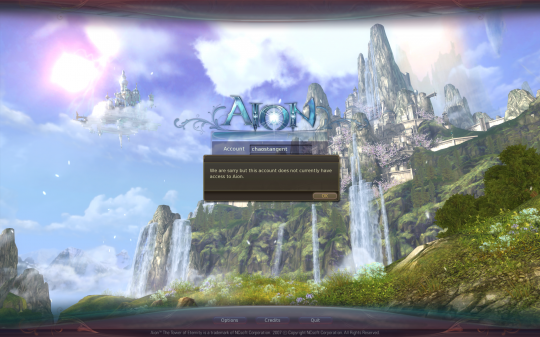

As a way of spending my bank holiday Sunday afternoon, I decided to embark on a small project; I didn't know what the project would be when I first began browsing through Wikipedia but eventually I ended up in About.com's C++ challenge section, one of which concerned John Horton Conway's "Game of Life": a rudimentary cellular automaton which, after its inception in 1970, had immeasurable impact on fields as diverse as philosophy and theology. After toying with some ideas, I decided to build a script which automatically creates animations of a number of generations of the game. From that seed the project grew into the first steps towards an avatar system, much like the automatically generated Gravatars that currently adorn so many Wordpress based blogs.
I wanted something that was deterministic and identifiable
The first step was getting the algorithm working, and as I had already decided to make it web-based, that meant a PHP implementation. Using only the Wikipedia page as reference, I threw together a very basic script that allowed me to enter in some settings (grid dimensions, seed and generation limit) and for it to spit out the states between the seed and the generation cut off. After some wrangling with minor bugs (spelling errors, incorrect typing etc.) an unoptimised first version of the algorithm was complete:
Read the rest of this entry




First episode event for Sora no manimani: tiny girl throwing golden stars like confetti from the school roof and proclaiming the existence of the astronomy club to all who have gathered below. As with so many first episode events, this dose of concentrated lunacy is quickly forgotten and its impact on the story only goes as far as introducing the fire-cracker Mihoshi to the more grounded Saku - reunited after an extended separation.
it's difficult to believe he's not the victim of a personality bypass operation
All of this has been roadtested before of course, neither the situation nor the character archetypes are anything new, Sora no manimani's mark is made in sporadically excellent comedy timing. Sharp cuts give enough momentum to keep the three opening episodes going, but each one quickly becomes a saga of different situations and storylines that it's almost a relief when the jaunty, lilting credits fade in. The hook for this series is the Astronomy club, and following such shows as the recent K-ON and more historically Genshiken, the first storyline involves coercing enough members to join to remain a club. Saku is emotionally bullied into it while the token infatuated love interest is next; like Genshiken this club also houses a gaunt, malnourished president - enigmatic only through their absence - his role being more to provide the occasional gag, to pad out the numbers and otherwise get out of the way. There is something very familiar and inoffensive about the entire set up.
Read the rest of this entry




When Studio bones attaches itself to an anime, it is a mark of quality that transcends genre. Not one of bones's back catalogue can be claimed to be substandard in either animation quality or production. Common occurrences like a first episode budget-burn or compromising fidelity for fluidity so common to serialised TV anime are non-existent for a bones' creation. So it's with continued admiration and a sense of joy that one can approach Tokyo Magnitude 8.0 safe in the knowledge of bones's place at the pinnacle of production.
one can imagine this is uncomfortable viewing for residents of Tokyo
Beginning with stark sepia scenes of a ruined Tokyo, this tells the - currently fictional - story of a severe earthquake striking the Tokyo metropolis area. Focusing on the trials of Mirai and Yuuki as they try to find their way home, the first three episodes of Tokyo Magnitude 8.0 are absolutely superb and are a masterclass in characterisation. Opening in rain drenched twilight then rolling back 24 hours, Mirai is portrayed as a typical urban youth: fractious, jaded and proud. Miles from their prototypical suburban home when the disaster hits, Mirai must first search tearfully for Yuuki but not before meeting the bike courier Mari; with Yuuki successfully located, the trio take flight from Odaiba and start the long journey back to their homes. Following such luminaries as Eden of the East with a diminutive 11 episodes, there is ample time to explore the meticulously researched devastation as well as forge the protagonists.
Read the rest of this entry




Or to give its full, punctuated title: Princess Lover! The premise - once again - is to cram as many lithe, buxom females into as confined a space as possible and provide an empty husk of a male protagonist to catalyse their frequently outlandish but never overtly raunchy interactions. In short: fan-service romance comedy. The anime is just one of a number of media co-minglings, starting with the visual novel by newcomers Ricotta (as in the cheese) and followed by light novels, manga, this anime and a related radio show. What should be surprising is just how many different ways such a vapid and paper-thin plot can be told.
this is borderline misogynistic, reinforced by the profusion of quantum singularities where underwear should be
The lead character's parents are killed and while moping near their grave one day he gets embroiled in a scrappily animated chase between a horse drawn carriage and an open-topped jeep full of thugs. One tenuous event leads to another and the pink haired, well-endowed passenger is flung from a cliff into a thicket of trees where upon the protagonist wakes up and finds himself fondling her chest. This is all immaterial of course because he has been adopted by his immeasurably wealthy grandfather, ostensibly in order to find the people responsible for his parent's murder and subsequently avenge them. Instead though he spends time rubbing elbows with various females and partaking in the local school social club (by attending a party after etiquette lessons, naturally). That this feels so familiar is odd considering the set-up at least is superficially unique.
Read the rest of this entry

I have decided, perhaps foolishly, to start playing an MMO - Aion. If one were to ask the reason for me deciding this, I could not give a single answer. I can quantify my reasoning, but not give a single definitive motive.
To backtrack, I don't usually play MMO's: I haven't played one extensively since Ultima Online back when 28.8 modems were considered cutting edge. I have dabbled only once since, joining the first iteration of Guild Wars, an NCSoft cost-to-buy but free-to-play system that was bought for playing with my significant other of the time; suffice to say neither of us took to it and that experiment ended with a little fanfare. I did hear of Aion when it was released in Korea at the tail end of 2008, although at the time it blended in with the general background noise of the Korean gaming scene of which MMO's play a large part.
I capitulated and purchased the Collector's Edition that had been beckoning to me, siren-like, on Steam
I think one of the aspects which swayed me into at least trying Aion was the aesthetics. Despite my ordinary avoidance of superficiality, I am by nature drawn to pretty things, a severe character flaw I'm sure. So it had crested the first hurdle in getting my attention. The second draw was the pleasant buzz surrounding it,
anime and
game blogs alike weren't exactly haemorrhaging praise but there was a decent undercurrent to the otherwise acerbic MMO discussion. Partnered with the looks came the lore, typical high-fantasy fare with a generous sprinkling of ethereal names that only just manages to be convincing of when it was conceived: moments before it was decided to be an MMO. And then there was the marketing:
Read the rest of this entry














